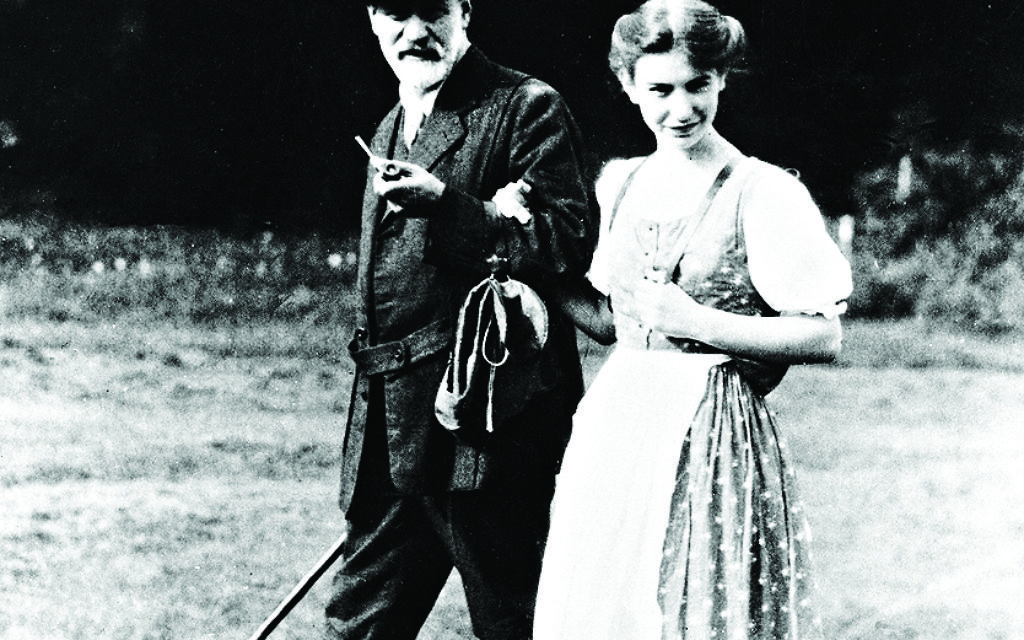1913: New book recounts Europe’s last year of peace before WWI
A new book about the last full year of peace before the start of the Great War offers a fascinating account of a complacent society about to be engulfed, reports Rebecca Wallersteiner
German journalist and writer Florian Illies, who has previously written Generation Golf, a critical look at the lack of idealism and style-fixation of his own 1980s’ generation, has delved further back into the past to produced a fascinating historical account in his book 1913.
The work tells the story of the year through a series of intriguing snippets, recorded month by month and fashioned into a diary of Europe. This was the momentous year in which Charlie Chaplin signed his first movie contract; a love-sick Kafka had just finished writing the classic Metamorphosis and Franz Wedekind’s Lulu was banned.
Get The Jewish News Daily Edition by email and never miss our top stories Free Sign Up
Elsewhere, Stravinsky’s Rite of Spring caused a riot in Paris; a cat crept into Sigmund Freud’s studio and the first aerobatic loop-the-loop was flown.
Illies firmly believes that Vienna, with its largely Jewish intelligentsia, was the European capital of ideas in 1913 – with Freud, Schnitzler, Zweig, Wittgenstein, Klimt and Kokoschka all swapping ideas, and often muses, in the city’s hundreds of cafés.
Also in Vienna, the 23-year-old Adolf Hitler, rejected from art school, spent his days painting quaint watercolours and wandering around the park of the Schonbrunn Palace.
Illies even speculates that Hitler may well have tipped his hat to future Russian tyrant Joseph Stalin, who also liked to wander around the park.
In many ways, the year 1913 was remarkably similar to 2013. The world was newly linked by the telephone, making instant communication possible, while capitalism and international trade were flourishing, with London already Europe’s financial centre.
Modern art and jazz were shocking the critics and motor vehicles were taking over Europe’s roads.
Given the carefree atmosphere, it is perhaps surprising many had premonitions of ruin. The composer Arnold Schoenberg, born on 13 September, was so superstitious about the number 13 that he went to great lengths to avoid it, even as a page number, but ended up dying on Friday, 13 July, 1951.
Meanwhile, 1913 did prove a lucky year for the writer Thomas Mann, whose new novel Death in Venice was acclaimed, but Mussolini’s favourite poet, Gabriele D’Annunzio, wrote the date 1912+1 throughout the year to avoid the omnipresent unlucky number 13.
In February 1913, Stalin met Trotsky for the first time – and in the very same month, in Barcelona, a man was born who would later murder Trotsky on Stalin’s orders. So perhaps 1913 was an unlucky year after all.
It was also the year of torrid love affairs – with artists and writers around Europe living as if there was no tomorrow.
Kafka, finding himself going mad with love in Prague, made a marriage proposal; D H Lawrence published Sons and Lovers, then ran off with mother-of-three Frieda von Richthofen; Oskar Kokoschka bought a canvas as big as the bed of his lover, the widow Alma Mahler, and painted them both.
When it became a masterpiece, but not before, Alma wanted to marry him. They fought for much of the year.
Although Illies’ book is light in tone, it creates a mood of impending catastrophe. We know in hindsight that it is only a few months until Archduke Franz Ferdinand will be assassinated in Sarajevo and the vast cosmopolitan Austro-Hungarian Empire, which had enabled Jews and other minorities to flourish for generations, is about to crumble.
By 1918, the political map of Europe was unrecognisable; the German, Habsburg, Russian and Ottoman empires had collapsed and more than 35 million people had been killed or wounded by the deadliest carnage in modern history.
Writing of the vanished world of pre-war Vienna, Stefan Zweig wrote: “All the bridges between our today and our yesterday and our yesteryears have been burnt.”
It may seem long ago, but it is actually quite recent – and continuing with the theme, there are actually 13,000 people still alive in the UK today who were alive in 1913.
Already a surprise international bestseller, this is one of the most fascinating and original historical books I have come across.
• 1913 – The Year before the Storm, by Florian Illies, published by The Clerkenwell Press, is priced £14.99. Available now.

Thank you for helping to make Jewish News the leading source of news and opinion for the UK Jewish community. Today we're asking for your invaluable help to continue putting our community first in everything we do.
For as little as £5 a month you can help sustain the vital work we do in celebrating and standing up for Jewish life in Britain.
Jewish News holds our community together and keeps us connected. Like a synagogue, it’s where people turn to feel part of something bigger. It also proudly shows the rest of Britain the vibrancy and rich culture of modern Jewish life.
You can make a quick and easy one-off or monthly contribution of £5, £10, £20 or any other sum you’re comfortable with.
100% of your donation will help us continue celebrating our community, in all its dynamic diversity...
Engaging
Being a community platform means so much more than producing a newspaper and website. One of our proudest roles is media partnering with our invaluable charities to amplify the outstanding work they do to help us all.
Celebrating
There’s no shortage of oys in the world but Jewish News takes every opportunity to celebrate the joys too, through projects like Night of Heroes, 40 Under 40 and other compelling countdowns that make the community kvell with pride.
Pioneering
In the first collaboration between media outlets from different faiths, Jewish News worked with British Muslim TV and Church Times to produce a list of young activists leading the way on interfaith understanding.
Campaigning
Royal Mail issued a stamp honouring Holocaust hero Sir Nicholas Winton after a Jewish News campaign attracted more than 100,000 backers. Jewish Newsalso produces special editions of the paper highlighting pressing issues including mental health and Holocaust remembrance.
Easy access
In an age when news is readily accessible, Jewish News provides high-quality content free online and offline, removing any financial barriers to connecting people.
Voice of our community to wider society
The Jewish News team regularly appears on TV, radio and on the pages of the national press to comment on stories about the Jewish community. Easy access to the paper on the streets of London also means Jewish News provides an invaluable window into the community for the country at large.
We hope you agree all this is worth preserving.
-
By Brigit Grant
-
By Laurent Vaughan - Senior Associate (Bishop & Sewell Solicitors)
-
By Laurent Vaughan - Senior Associate (Bishop & Sewell Solicitors)
-
By Laurent Vaughan - Senior Associate (Bishop & Sewell Solicitors)
-
By Laurent Vaughan - Senior Associate (Bishop & Sewell Solicitors)

























